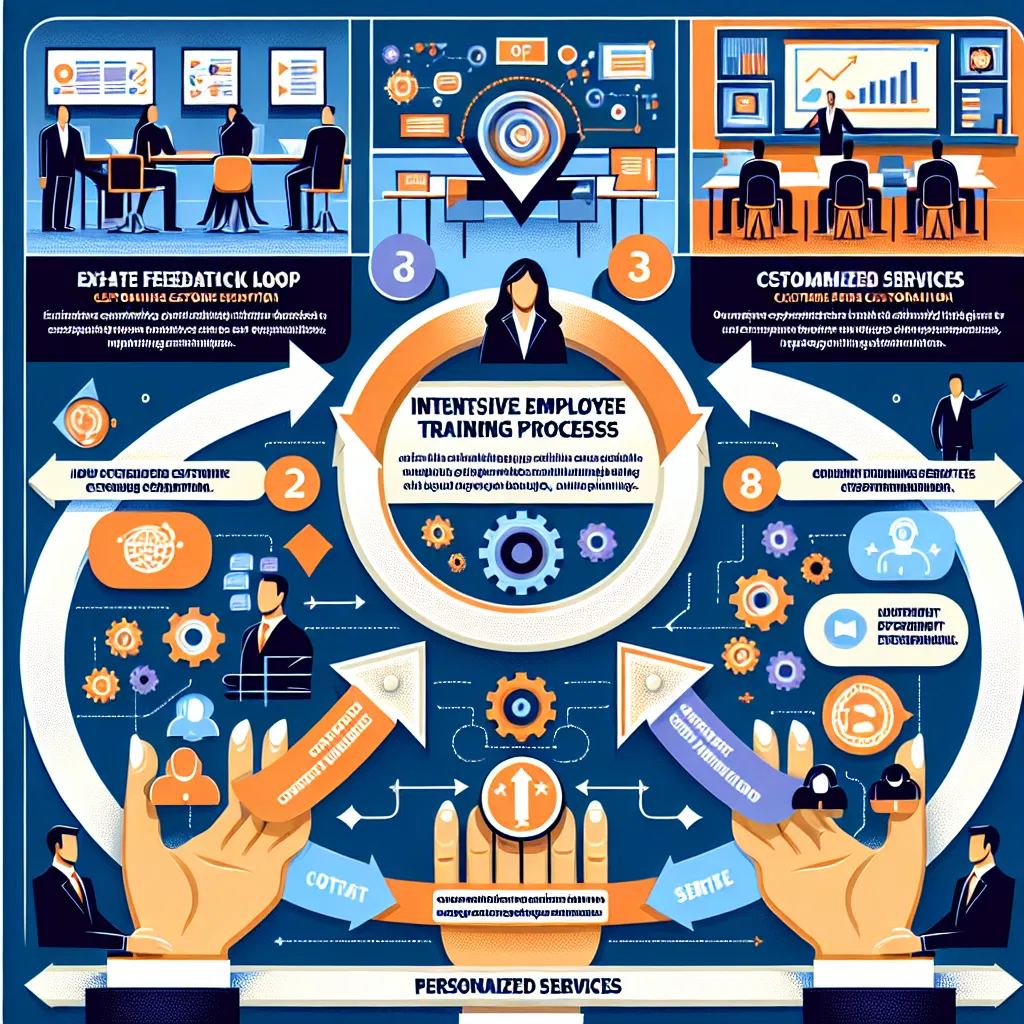Customer satisfaction is a crucial aspect of any business, and employers often seek candidates who understand its importance and can contribute to improving it. If you’re preparing for a job interview, it’s essential to be ready to answer questions about customer satisfaction effectively. This guide will help you navigate through such questions and provide you with strategies to impress your potential employer.
Understanding Customer Satisfaction
Customer satisfaction refers to the measure of how products and services supplied by a company meet or surpass customer expectations. It’s a key performance indicator within business that indicates the health of the company’s customer relationships. Companies prioritize customer satisfaction because satisfied customers are more likely to become repeat customers and brand advocates.
 Customer Satisfaction Concept
Customer Satisfaction Concept
Why Employers Ask About Customer Satisfaction
Employers ask about customer satisfaction for several reasons:
- To assess your understanding of its importance in business
- To gauge your experience in dealing with customers
- To evaluate your problem-solving skills in customer-related situations
- To determine if you align with the company’s customer-centric values
Common Interview Questions About Customer Satisfaction
Let’s explore some typical questions you might encounter and how to answer them effectively.
1. “How do you define customer satisfaction?”
Sample answer: “I define customer satisfaction as the extent to which a customer’s expectations are met or exceeded by their experience with a product or service. It’s not just about solving problems but creating positive, memorable interactions that build loyalty and encourage customers to recommend the business to others.”
2. “Can you describe a time when you went above and beyond for a customer?”
Sample answer: “In my previous role as a customer service representative, I once had a client who was frustrated because their order hadn’t arrived in time for an important event. Although it wasn’t our company’s fault due to shipping delays, I understood the customer’s disappointment. I took it upon myself to personally deliver the package to the customer’s address after my shift ended. The customer was so impressed with this extra effort that they not only became a loyal customer but also referred several new clients to our business.”
3. “How would you handle an angry customer?”
Sample answer: “When dealing with an angry customer, my approach would be to:
- Listen actively without interrupting
- Empathize with their frustration
- Apologize sincerely for their negative experience
- Ask questions to fully understand the issue
- Propose a solution or escalate to a supervisor if necessary
- Follow up to ensure the problem is resolved and the customer is satisfied
The key is to remain calm, show genuine concern, and focus on finding a solution rather than placing blame.”
4. “What metrics would you use to measure customer satisfaction?”
Sample answer: “To measure customer satisfaction, I would consider using several metrics:
- Net Promoter Score (NPS): This measures how likely customers are to recommend the company to others.
- Customer Satisfaction Score (CSAT): A direct measure of satisfaction with a specific interaction or product.
- Customer Effort Score (CES): This gauges how easy it was for the customer to get their issue resolved.
- Retention Rate: The percentage of customers who continue to use the product or service over time.
- Customer Feedback and Reviews: Qualitative data from surveys and online reviews.
These metrics provide a comprehensive view of customer satisfaction from different angles.”
5. “How do you think customer satisfaction affects a company’s bottom line?”
Sample answer: “Customer satisfaction directly impacts a company’s bottom line in several ways:
- Increased Customer Retention: Satisfied customers are more likely to remain loyal, reducing churn and the costs associated with acquiring new customers.
- Positive Word-of-Mouth: Happy customers often become brand advocates, bringing in new customers through referrals at little to no cost to the company.
- Higher Customer Lifetime Value: Satisfied customers tend to make more purchases over time and may be willing to try new products or services.
- Reduced Customer Service Costs: When customers are satisfied, there are fewer complaints and issues to resolve, reducing operational costs.
- Price Premium: Satisfied customers may be willing to pay more for products or services they trust and value.
All these factors contribute to increased revenue and profitability for the company.”
Tips for Answering Customer Satisfaction Questions
- Use the STAR Method: When giving examples, use the Situation, Task, Action, Result format to structure your answers clearly.
- Highlight Soft Skills: Emphasize skills like empathy, active listening, and problem-solving in your responses.
- Show Data Awareness: Demonstrate your understanding of how customer satisfaction can be measured and improved using data.
- Align with Company Values: Research the company beforehand and tailor your answers to align with their customer service philosophy.
- Provide Specific Examples: Use real-life scenarios from your past experiences to illustrate your points.
 Customer Satisfaction Improvement Strategies
Customer Satisfaction Improvement Strategies
Common Mistakes to Avoid
When answering questions about customer satisfaction, avoid these pitfalls:
- Being Vague: Don’t give generic answers. Always provide specific examples or strategies.
- Focusing Only on the Company: Remember that customer satisfaction is about the customer, not just the company’s profits.
- Ignoring the Emotional Aspect: Don’t forget that customer satisfaction often involves managing emotions and expectations.
- Underestimating the Importance: Never downplay the significance of customer satisfaction in business success.
- Failing to Mention Continuous Improvement: Always indicate your commitment to ongoing learning and improvement in customer service.
Follow-up Questions and Sample Answers
- “How would you improve our current customer satisfaction process?”
Sample answer: “To improve the current process, I would suggest implementing a real-time feedback system, conducting regular customer surveys, and creating a customer advisory board. Additionally, I’d recommend investing in employee training to ensure consistent service quality across all touchpoints.”
- “What role does employee satisfaction play in customer satisfaction?”
Sample answer: “Employee satisfaction is crucial for customer satisfaction. Happy employees are more likely to provide better service, go the extra mile for customers, and create a positive atmosphere. Investing in employee well-being and training directly translates to improved customer experiences.”
- “How would you handle a situation where company policy conflicts with customer satisfaction?”
Sample answer: “In such a situation, I would first try to find a creative solution within the policy that could satisfy the customer. If that’s not possible, I would escalate the issue to my supervisor, explaining both the policy constraints and the potential impact on customer satisfaction. The goal would be to find a balance that maintains the integrity of company policies while still prioritizing customer needs.”
- “Can you describe a time when you turned a dissatisfied customer into a loyal one?”
Sample answer: “In my previous role, we had a customer who was frustrated with a software glitch that caused them to lose some data. I took ownership of the problem, worked closely with our tech team to recover the data, and kept the customer updated throughout the process. I also offered them a free month of service and personally trained them on data backup procedures. This level of care not only resolved their immediate issue but also demonstrated our commitment to their success. The customer became one of our biggest advocates, even featuring in a case study about our exceptional service.”
- “How do you stay updated on customer service trends and best practices?”
Sample answer: “I stay informed by regularly reading industry publications, attending webinars and conferences on customer service, and participating in online forums where professionals share insights. I also believe in learning from direct customer feedback and analyzing our own service data to identify trends and areas for improvement.”
Conclusion
Mastering the art of answering questions about customer satisfaction can significantly boost your chances of success in job interviews, especially for roles that involve customer interaction. Remember to focus on the customer’s perspective, provide specific examples from your experience, and show your understanding of how customer satisfaction impacts overall business success. By preparing thoughtful answers to these common questions, you’ll demonstrate your value as a customer-centric professional ready to contribute to the company’s success.
For more interview preparation tips, check out our articles on how to answer questions about critical thinking and how to answer questions about interpersonal skills. These skills often go hand-in-hand with customer satisfaction and can help you present a well-rounded profile to potential employers.




